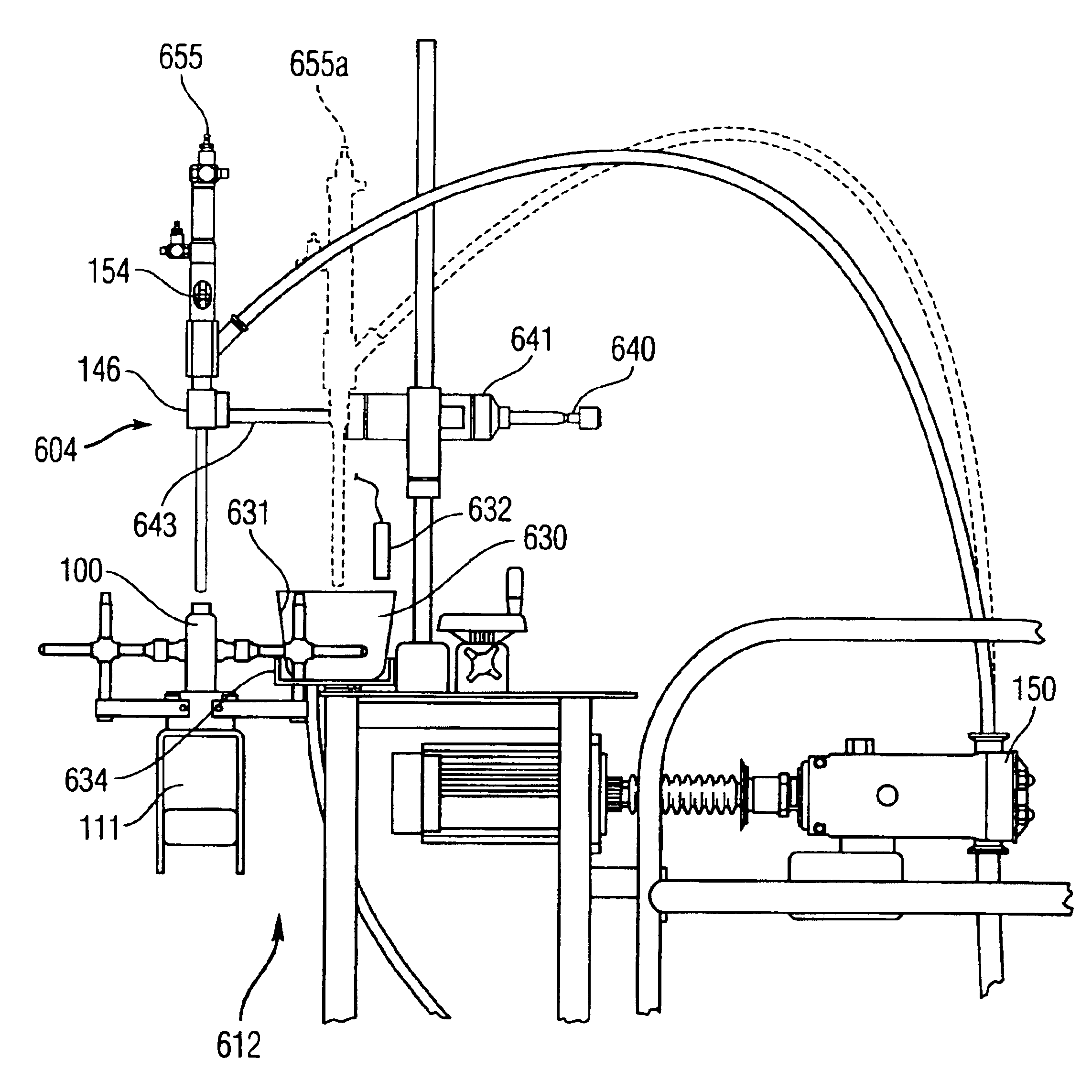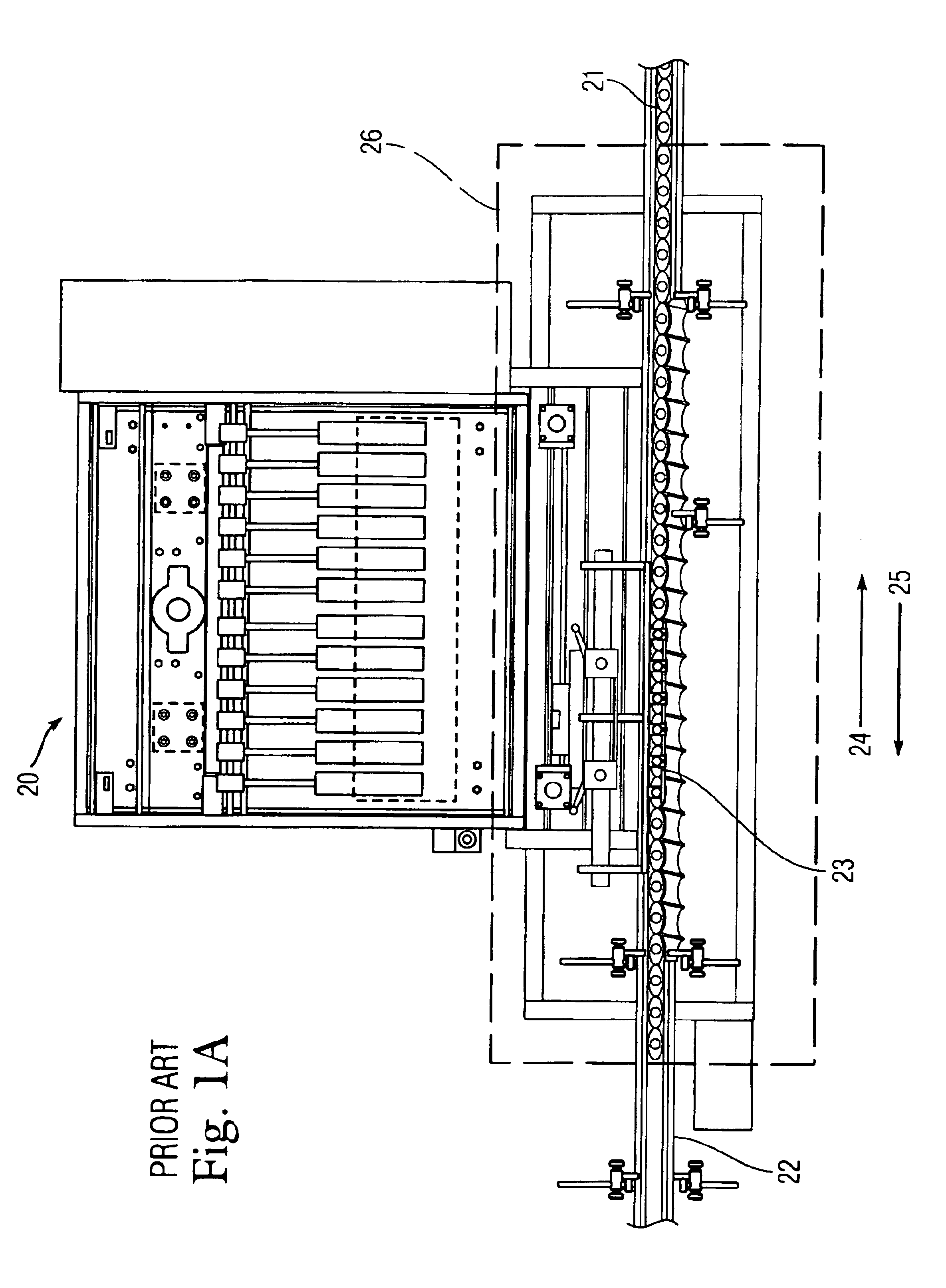Liquid filling system with improved set-up and fill weight calibration/verification capabilities
a filling system and filling weight technology, applied in liquid handling, packaging goods types, liquid handling, etc., can solve the problems of affecting the overall production capability of either type of system, automatic or semi-automatic, affecting the accuracy of filling, so as to improve the overall system safety, minimize, if not eliminate, the potential for operator error
- Summary
- Abstract
- Description
- Claims
- Application Information
AI Technical Summary
Benefits of technology
Problems solved by technology
Method used
Image
Examples
Embodiment Construction
[0115]FIG. 3 shows a top perspective view of a liquid filling system 10 according to a first embodiment of the present invention, including a container handling subsystem 102, a nozzle support subsystem 104, a product contact subsystem 106, and a controls / utilities subsystem 108.
[0116]The container handling subsystem 102 carries the containers 100 to and from the filling area and, while they are in the filling area, positions them for the entry of the filling nozzles 154.
[0117]The nozzle support subsystem 104 articulates the nozzles 154, moving them up and down (or, into and out of the containers 100) during the filling process. In addition, as will be described, nozzle support subsystem 104 may employ an intermittent-motion filling process by which the nozzles 154 are moved back and forth from container-to-container, or a continuous motion process by which nozzles 154 track the moving containers along the filling area.
[0118]The product contact subsystem 106 contains the elements of...
PUM
| Property | Measurement | Unit |
|---|---|---|
| angle | aaaaa | aaaaa |
| power rating | aaaaa | aaaaa |
| power rating | aaaaa | aaaaa |
Abstract
Description
Claims
Application Information
 Login to View More
Login to View More - R&D
- Intellectual Property
- Life Sciences
- Materials
- Tech Scout
- Unparalleled Data Quality
- Higher Quality Content
- 60% Fewer Hallucinations
Browse by: Latest US Patents, China's latest patents, Technical Efficacy Thesaurus, Application Domain, Technology Topic, Popular Technical Reports.
© 2025 PatSnap. All rights reserved.Legal|Privacy policy|Modern Slavery Act Transparency Statement|Sitemap|About US| Contact US: help@patsnap.com



